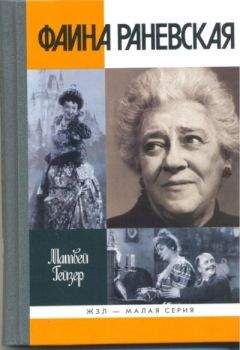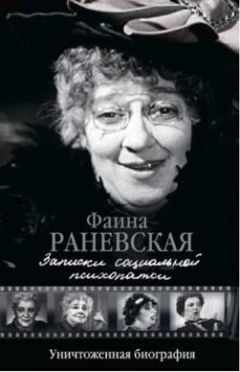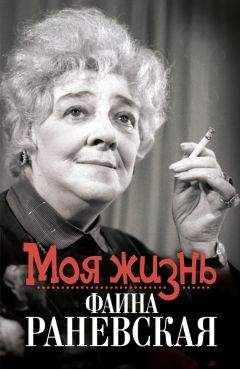Степан Ванеян - Гомбрих, или Наука и иллюзия. Очерки текстуальной прагматики
257
Ziele und Grenze der Ikonologie… S. 385.
258
Ziele und Grenze der Ikonologie… S. 386.
259
Ibid. S. 388. Можно заметить, что дилеммы или проблемы выбора в этом нет: одно именно предполагает другое, как и следует из текстов того же Панофского.
260
См.: Bialostocky J. Iconography // Dictionary of the History of Ideas. 1973. Bd. 2. P. 524–541.
261
Ziele und Grenze der Ikonologie… S. 409.
262
См. выше переиначивание-переложение этого места у Форс смана. Кроме того, сам мотив сокрытия-оборачивания имеет неожиданные эквиваленты в Евангелии (мина, завернутая в платок: Лк. 19:20).
263
Ziele und Grenze der Ikonologie… S. 416.
264
Ср.: Ebling K., Günzel S. (Hrsg.). Archivologie. Theorien des Archivs in Philisophie, Medien und Künsten. Berlin, 2009.
265
Ziele und Grenze der Ikonologie… S. 417.
266
Ibid. S. 418.
267
Ziele und Grenze der Ikonologie… S. 418.
268
Ibid. S. 419.
269
Ziele und Grenze der Ikonologie… S. 424.
270
Strzygowsky J. Die bildende Kunst der Gegenwart. Ein Büchlein für Jedermann. Leipzig: Quelle & Meyer, 1907. S. 12.
271
Kris E., Gombrich E. The Principles of Caricature // British Journal of Medical Psychology. 1938. Vol. 17. P. 319–342. Caricature // King Penguin Books, 5, Harmondsworth, Mddx. 1940.
272
См. сборник: Mitchell T. Bildtheorie… S. 9–14.
273
Ibid. S. 10.
274
См. замечательные в своем неподражаемом глубокомыслии размышления Ригля: Riegl A. Der moderne Denkmalkultus, sein Wesen und seine Entstehung [1903] // Gesammelte Aufsätze. 2. Aufl. Berlin, 1995. Особенно идею, что современность как ценность требует своей актуализации в памятнике, который, между прочим, в такой функции действует антиэстетически (Ibid. S. 181 ff).
275
Ziele und Grenze der Ikonologie… S. 425.
276
См. соответствующий сборник у Гомбриха: Gombrich E. Norm and Form. Studies in the Art of the Renaissance. London, 1966; 2nd. ed. London; N.Y.: Phaidon, 1971.
277
Schütz I. (Hrsg.). Über Geschmack lässt sich doch streiten. Zutaten aus Küche, Kunst und Wissenschaft. Berlin: Kadmos, 2011.
278
Gombrich E.H. Symbolic Images. Studies in the Art of the Renaissance. London: Phaidon, 1972. P. 1–25.
279
См. в том числе ранние, прежде не публиковавшиеся тексты (кандидатская и докторская диссертации): Wind E. Ästhetischer und Kunstwissenschaftlicher Gegenstand. Ein Beitrag zur Methodologie der Kunstgeschichte [1922]. Hamburg: Philo Fine Arts, 2011; Wind E. Experiment und Metaphysik. Zue Auflösung der kosmologischen Antinomien [1934]. Frankfurt a/M.: Suhrkamp, 2001. Из последних публикаций о нем см.: Bredekamp H., Buschendorf B., Hartung F., Krois J. Edgar Wind – Kunsthistoriker und Philosoph. Oldenbourg: Akademieverlag, 1999; а также предисловия к вышеуказанным публикациям и особенно к след.: Wind E., Krois J.M. (Hrsg.). Heilige Furcht und andere Schriften zum Verhältnis von Kunst und Philosophie. Hamburg: Philo Fine Arts, 2009. S. 9–40 (здесь же – и послесловие. S. 395–418).
280
Gombrich E. Botticelli’s mythologies. A study in the Neoplatonic Symbolism of his Circle // Journal of the Warburg and Courtauld Institutes. 1947. Vol. 8. P. 7–60. Reprinted in: Symbolic Images, 1972. К этой работе примыкает эссе: Icones Symbolicae. The visual image in neo-Platonic thought // Journal of the Warburg and Courtauld Institutes. Vol. 11. P. 163–192. Reprinted (revised) in: Symbolic Images, 1972.
281
Gombrich E.H. Symbolic Images… P. 31.
282
Gombrich E.H. Symbolic Images… P. 35.
283
И, кстати говоря, основное эссе Гомбриха на эту тему: On Physiognomic Perception // Daedalus. Journal of the American Academy of arts and sciences (Special issue: The Visual Arts today). P. 228–241. Reprinted in: Meditations on a Hobby Horse, 1963. Ср.: The Mask and the Face: the perception of physiognomic likeness in life and in art // Gombrich E.H., Hochberg J., Black M. Art, perception and reality. P. 1–46. Reprinted in: The Image and the Eye, 1982.
284
Gombrich E.H. Symbolic Images… P. 53.
285
Ibid. P. 54.
286
Ibid. P. 55.
287
Ibid.
288
См.: Gombrich E. Ritualized Gesture and expression in art, Philosophical Transactions of the Royal Society of London. Series B: Biological Sciences. Vol. 251. No. 772. P. 393–401. Reprinted in: The Image and the Eye, 1982.
289
Gombrich E.H. Symbolic Images… P. 55.
290
Ibid. P. 56.
291
Symbolic Images… P. 57.
292
Ibid. P. 58.
293
Ibid. P. 59.
294
Symbolic Images… P. 212.
295
Ibid. P. 59.
296
Gombrich E.H. Symbolic Images… P. 59–60.
297
Ibid. P. 60.
298
О Homo ludens у Гомбриха см.: Huizinga’s “Homo ludens”, Bijdragen en Mededelingen betreffende de geschiedenis der Nederlanden. Vol. 88. P. 275–296. Reprinted in: W.R.H. Koops et al. Johan Huizinga, 1872–1972. The Hague, 1973; см. также: The Times Literary Supplement. 1974. 4 October и в: Tributes. 1984.
299
Symbolic Images… P. 60.
300
Ibid.
301
Ibid. P. 61.
302
Gombrich E.H. Symbolic Images… P. 62.
303
Ibid.
304
Кассоне (итал. cassone, происходит от итал. cassa – ящик, сундук) – сундук для приданого. В начале XV в. в Тоскане появилась мода украшать кассоне живописными панно с религиозными, мифологическими сценами или сценами из древней и современной истории. – Примеч. ред.
305
Gombrich E.H. Symbolic Images… P. 62.
306
Ibid.
307
Ibid. P. 63.
308
Ibid. P. 62.
309
Ibid.
310
Ibid.
311
Ibid. P. 63.
312
Gombrich E.H. Symbolic Images… P. 64.
313
Ibid.
314
Ibid.
315
Wind E. Pagan Mysteries in the Renaissance. New Haven: Yale University Press, 1958. P. 100–110.
316
Gombrich E. Visual Metaphors of value in art // L. Bryson et al. (eds). Symbols and Values: an initial study. 13th symposium of the conference on science, philosophy and religion. N.Y. P. 225–281. Reprinted in: Meditations on a Hobby Horse, 1963; Smith R.A. (ed.). Aesthetics and Criticism in Art Education. Chicago, 1966.
317
Meditations on a Hobby Horse and other Essays on the Theory of Art. London, 1963. P. 13.
318
Meditations on a Hobby Horse… P. 13.
319
Ibid. P. 14.
320
Ibid. P. 18.
321
Ibid.
322
Ibid.
323
Ibid. P. 19.
324
Ibid. P. 20.
325
Meditations on a Hobby Horse… P. 21.
326
На бескрайнюю тему «Гомбрих и психоанализ» из недавних публикаций см.: Dedman R. The importance of being Ernst: a reassessment of E. H. Gombrich’s relationship with psychoanalysis // Journal of Art Historiography. 2012. No. 7. December. P. 1–26.
327
Meditations on a Hobby Horse… P. 22–23.
328
Ibid. P. 24.
329
Ibid. P. 25.
330
Ibid.
331
Ibid. P. 26.
332
Meditations on a Hobby Horse… P. 28–29.
333
Wind E. Pagan Mysteries… P. 110.
334
Gronemeyer N. Optische Magie: Zur Geschichte der visuellen Medien in der Frühen Neuzeit. Transcript, 2004.
335
Немецкоязычное продолжение см.: Kunstgeschichte und Kunsttheorie im 19. Jahrhundert (Probleme der Kunstwissenschaft, 1) // Art Bulletin. 1964. Vol. 46. P. 418–420. Заметки англоязычные на ту же тему см.: The Use of Art for the Study of Symbols, American Psychologist. Vol. 20. P. 34–50. Reprinted in: J. Hogg (ed.). Psychology and the Visual Arts. Harmondsworth, 1969.
336
См.: Atlantisbuch… S. 653.
337
Ср. на эту тему более поздний текст: Gombrich E. Kunstwissenschaft und Psychologie vor fünfzig Jahren, XXV Internationaler Kongress fuer Kunstgeschichte, Wien, 1983 September 4–10. Wien, 1984. Bd. I. S. 99–104.
338
Напомним, что эта эпистемологическая коллизия – основа фундаментальнейшего труда Г. Лютцеллера: Lützeller H. Kunsterfahrung und Kunstwissenschaft: systematische und entwicklungsgeschichtliche Darstellung und Dokumentation des Umgangs mit der bildenden Kunst. Bd. 1–3. Freiburg: K. Alber, 1975.
339
Atlantisbuch… S. 653, 665.
340
Atlantisbuch… S. 655 (со ссылкой и на Якоба Буркхарда, третировавшего так называемое атрибутничество).
341
Ibid. S. 656.
342
Что понимать под искусством и что следует понимать под ним, учитывая разные эпохи, – фактически основная мысль «Истории искусства», о чем – ниже.
343
Atlantisbuch… S. 663. Стоит заметить, что это довольно ранние тексты, но в них уже вполне сформировался взгляд Гомбриха на Варбурга, последовательно реализованный им в соответствующей книге.
344
Hofmann W. Bildende Kunst. Bd. II. S. 195.
345
См.: Lützeller H. Kunsterfahrung und Kunstwissenschaft: systematische und entwicklungsgeschichtliche Darstellung und Dokumentation des Umgangs mit der bildenden Kunst. Freiburg: K. Alber, 1975. Bd. 2. S. 944. И далее замечание, что иконография «огрубляет и искажает христианское содержание» по причине своего общего схематизма (S. 945).
346
Atlantisbuch… S. 659.
347
Ibid. S. 664.
348
Текст-манифест этой тенденции – «Конец теории отображения» Отто Пэхта: Pächt O. Das Ende der Abbildtheorie // Pächt O. Methodisches zur kunsthistorischen Praxis. München: Prestel, 1986. Познание – не репродукция объекта познания, а слияние с ним и передача этого опыта переноса с помощью единственного приемлемого средства – поэзии.




